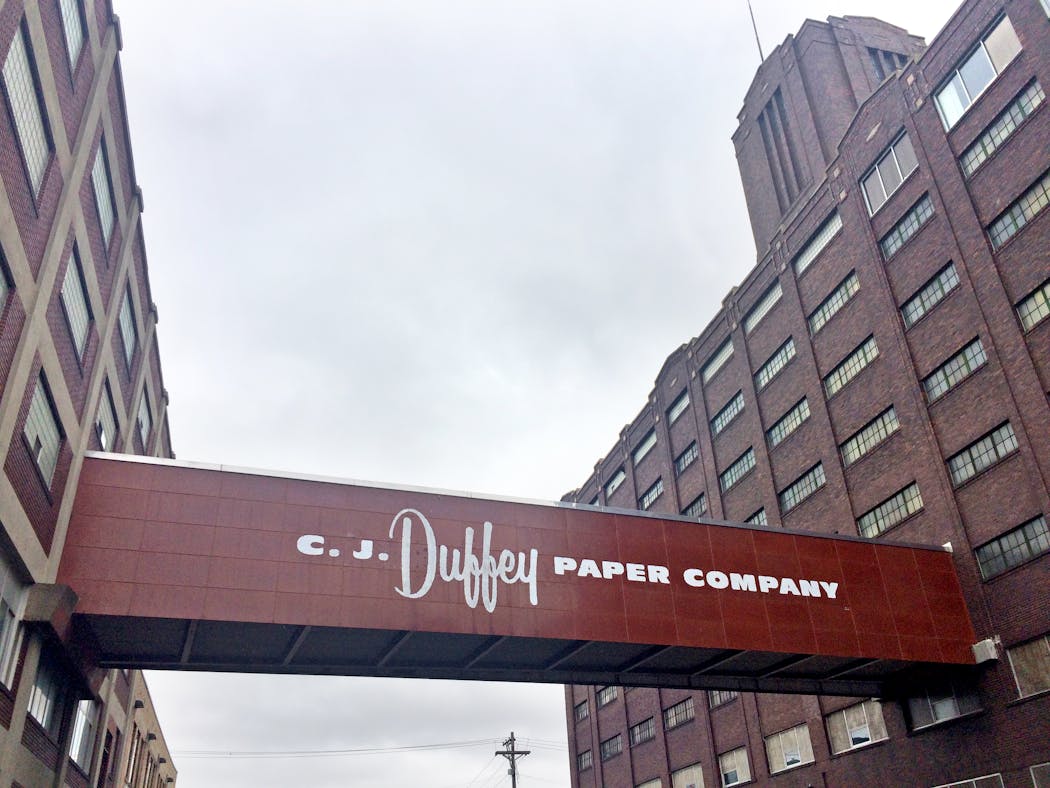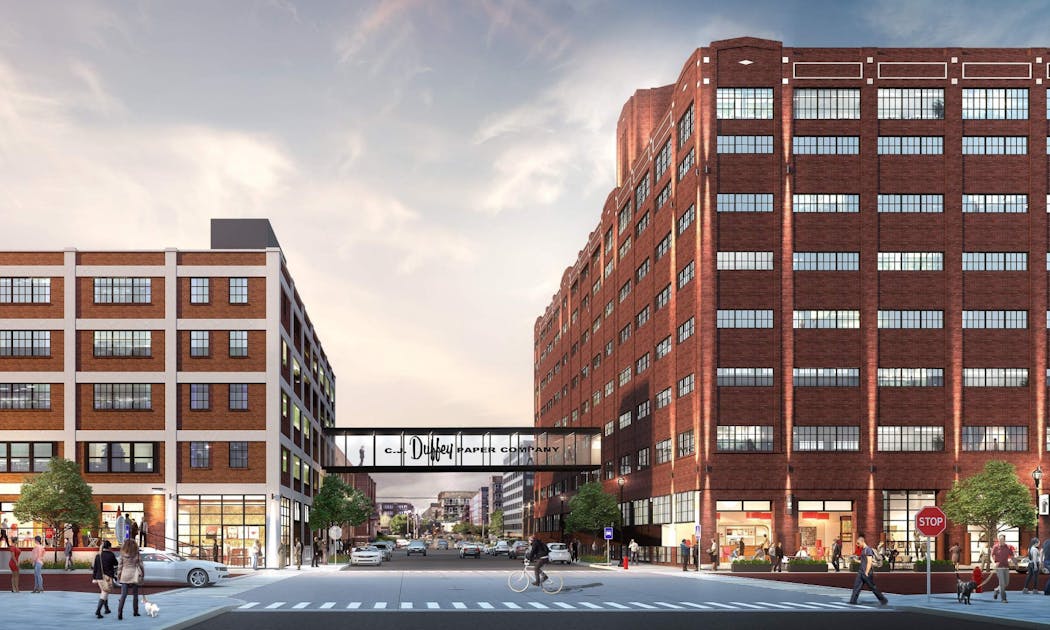A trio of historic warehouses in the popular North Loop neighborhood near downtown Minneapolis should have been a hot commodity when they hit the market a few years ago.
Instead, it took years to find a buyer.
Many developers looked at the three side-by-side buildings on Washington Avenue — part of the Duffey Paper Co. complex — and saw multiple problems.
A floor plate too large to easily carve into apartments. Not enough parking and nowhere to build it. And a listing on the National Register of Historic Places, limiting the changes that can be made.
CedarSt Cos., a Chicago-based developer, wasn't deterred. After years of planning and construction, the company recently completed the Duffey Lofts. The $71 million mixed-use project has 188 rentals, a coffee bar that's open to the public and a rare seven-story "light well" cut into the center of one of the buildings.
And now the company is ready to do it all over again with the former Duffey warehouses several blocks away. That restoration will be more than twice the size of the first.
CedarSt closed on Duffey's two warehouses — known for the skyway above 3rd Street N. that connects them — and a parking lot two blocks from the Duffey Lofts.
The developer plans to spend $171 million on a restoration that will bring another 358 rentals to the North Loop.
That includes the conversion of an eight-story, 275,000-square-foot warehouse into 260 rentals, retail space and underground parking.
A five-story, 108,000-square-foot warehouse that's attached to the larger one by the skyway will get 50 apartments, more retail, more underground parking and a 20,000-square-foot amenity space.
The parking lot will be replaced by a five-story building with 34 rentals, ground-floor retail and parking for nearly 300 cars.
Together, the 550,000-square-foot project will have 42,000 square feet of retail space and several unusual amenities. That includes full-size bowling lanes, a swimming pool and hot tub and a co-working space for residents.
Mark Heffron, managing partner and chief development officer for CedarSt, said projects that marry historic elements with modern amenities are driven by a single question: "How do we maintain that authenticity … yet make enough changes in the building that make the deal pencil?"
CedarSt hired BKV Group and RJM Construction to tackle both projects.
Ted Beckman, senior vice president for RJM, said the planning took almost as long as the demolition and construction for the just-finished Duffey Lofts project.
While the buildings showed their age, he said, they were sturdy and had "strong bones" that made it possible to significantly alter the buildings within the constraints of the Minnesota State Historical Preservation Office regulations that are attached to the historic tax credits that help finance the costly renovations.
"The three different buildings all had their own challenges," Beckman said. "It took a lot of vision."
Beckman and Heffron agreed that one of the biggest challenges was finding a way to add sufficient parking.
Underground parking wasn't possible because the buildings sit atop bedrock, making it logistically and economically challenging.
Instead, the company used ComSlab, a steel and concrete flooring system that had never been used in this area, to build a 113-car parking structure within the middle building.
"Pulling off the parking was really the puzzler," Heffron said.
The remaining third of that building was repurposed as the Duffey Lofts main lobby, a soaring 80-by-40-foot space that was completely modernized. Design-wise, it harkens back to the building's industrial origins.
The focal point of that lobby is an original crane that was used to unload steel from the rail cars that ran behind the building.
"That allowed us to really play up the historical character of the building," Heffron said.
That lobby also houses another unique feature: a public coffee bar.
Heffron said the company recently signed a lease with St. Paul-based Bootstrap Coffee Roasters to operate the space, which he said enables more people to celebrate and use the space.
"All that space and all that character will be highly trafficked, and that'll be cool," he said.
Heffon said one of the biggest breakthroughs in the conversion from commercial to residential, though, is the addition of the light well. It was cut into the center of the Iron Store building, the largest and tallest of the three buildings.
Typically, Heffron said, residential buildings are relatively narrow — about 55 to 80 feet wide — so, apartments are lined up along at least one exterior wall to have windows.
At about 120 feet by 165 feet, the Iron Store building is barely a rectangle. So, rather than divide the space into extremely long, narrow, shotgun-style apartments with windows at only one end, a 28-by-30-foot opening through the center of all seven floors creates a light well that gives every apartment a window.
Apartments along the exterior walls have views of the surrounding neighborhood, while inner units that surround the perimeter of the light well look into a courtyard-like space.
Without the light well, Heffron said, the apartments would have had to be either windowless or much larger, making them far more expensive.
So far, Heffron said, apartments that face that light well have been easy to rent in part because they don't get any street noise.
And given the current unit mix, leasing activity has already surpassed expectations. Three months after opening, the entire building is 50% leased. Studio rents start at $1,100, and one-bedroom units start at $1,450.
Heffron said the company did a similar light well at the Draper, an adaptive reuse project in Chicago. It will cut one at its next project, which it's unofficially calling Duffy 2.0, set to start construction later this month. That light well will be much larger — 38 feet by 71 feet — and professionally landscaped.
Simon Mark, an RJM project manager who was onsite daily at the Duffey Lofts, said construction of those light wells start at the top and crews work their way down. As they cut, tons of concrete and debris to fall to the floor below, which had to be reinforced with metal joists salvaged from another part of the project.
It took weeks for crews to cut those openings using walk-behind concrete saws with 36- to 48-inch blades.
Given the complexity of such projects, Beckman said some might wonder if it might have been easier to bulldoze the buildings and start from scratch. Not necessarily, he said.
"Starting over would not have been beneficial," Beckman said. "These historic buildings serve a wonderful purpose."


